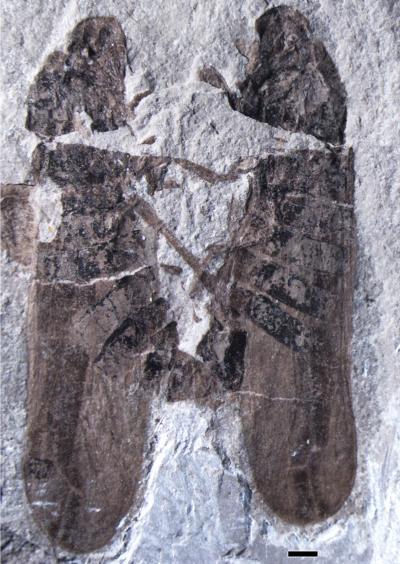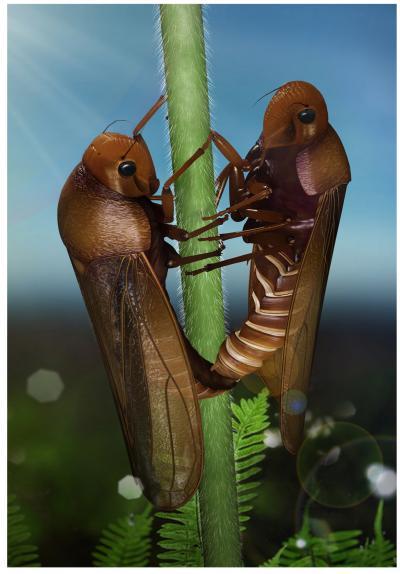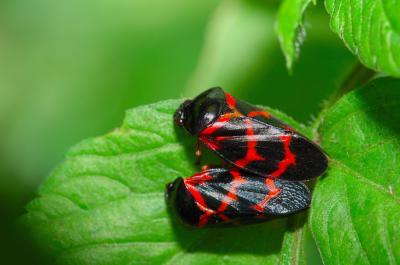Scientists have found the oldest fossil depicting copulating insects in northeastern China, published November 6th in the open-access journal PLOS ONE by Dong Ren and colleagues at the Capital Normal University in China.
Fossil records of mating insects are fairly sparse, and therefore our current knowledge of mating position and genitalia orientation in the early stages of evolution is rather limited.
In this study, the authors present a fossil of a pair of copulating froghoppers, a type of small insect that hops from plant to plant much like tiny frogs. The well-preserved fossil of these two froghoppers showed belly-to-belly mating position and depicts the male reproductive organ inserting into the female copulatory structure.

This image shows a holotype male, on the right, and allotype female, on the left.
(Photo Credit: Li S, Shih C, Wang C, Pang H, Ren D (2013) Forever Love: The Hitherto Earliest Record of Copulating Insects from the Middle Jurassic of China. PLoS ONE 8(11): e78188. doi:10.1371/journal.pone.0078188)
This is the earliest record of copulating insects to date, and suggests that froghoppers' genital symmetry and mating position have remained static for over 165 million years. Ren adds, "We found these two very rare copulating froghoppers which provide a glimpse of interesting insect behavior and important data to understand their mating position and genitalia orientation during the Middle Jurassic."

This shows a 3-D ecological reconstruction of Anthoscytina perpetua mating behavior.
(Photo Credit: Li S, Shih C, Wang C, Pang H, Ren D (2013) Forever Love: The Hitherto Earliest Record of Copulating Insects from the Middle Jurassic of China. PLoS ONE 8(11): e78188. doi:10.1371/journal.pone.0078188)

This photo shows froghoppers, which are an extant representative species of Anthoscytina perpetua, in copulation.
(Photo Credit: Li S, Shih C, Wang C, Pang H, Ren D (2013) Forever Love: The Hitherto Earliest Record of Copulating Insects from the Middle Jurassic of China. PLoS ONE 8(11): e78188. doi:10.1371/journal.pone.0078188)
Source: Public Library of Science